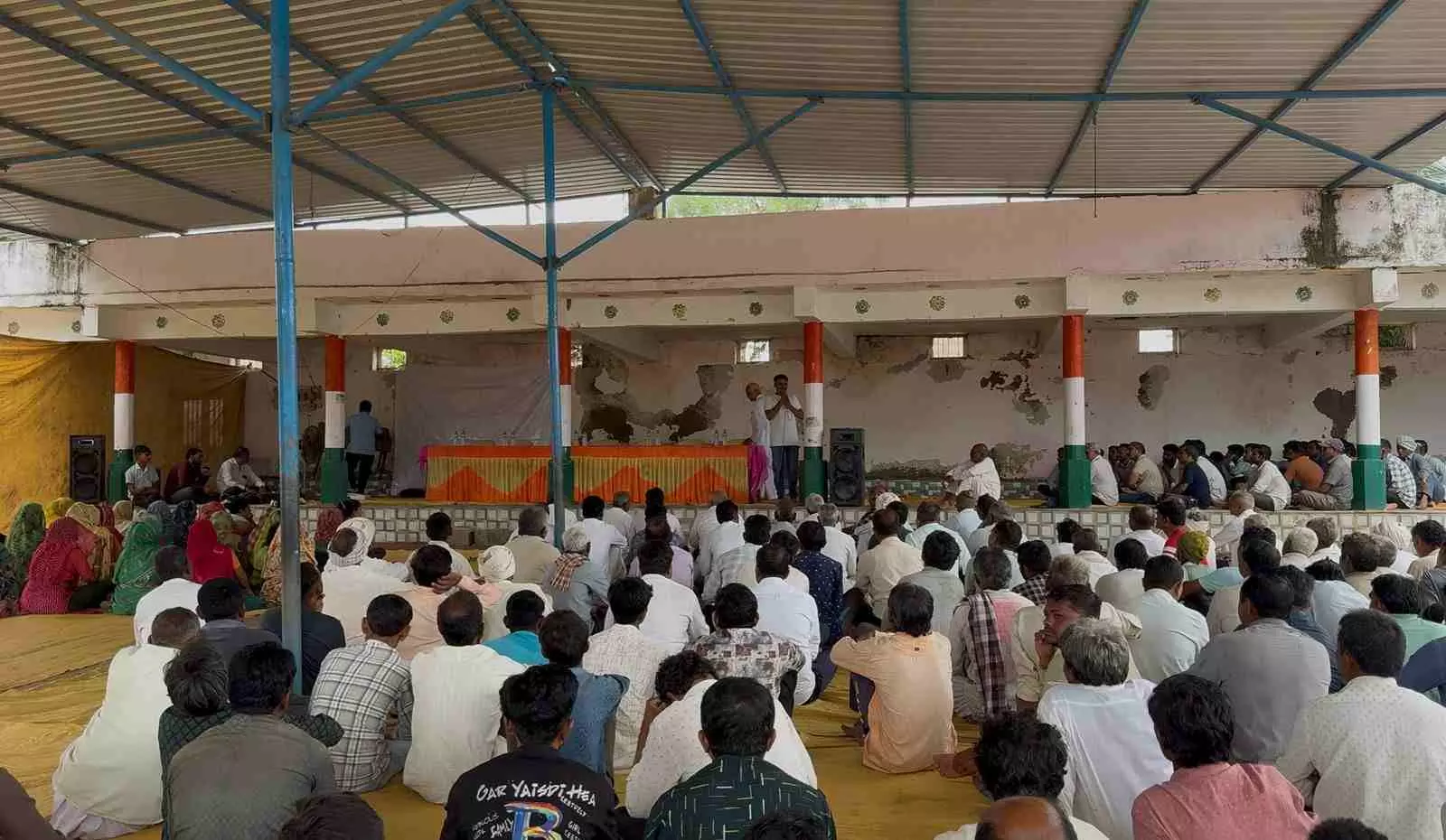
Gujarat’s farmers erupt in protest after suicide over crop loss, debt
Successive crop failures, mounting debts, and stalled relief disbursement fuel outrage across Gujarat’s rain-hit farming belt, pushing cultivators to the brink

Angry farmers across Gujarat once again took to the streets on Monday (November 3), hours after Karsanbhai Ahir, a 58-year-old farmer from Jampar village in Devbhoomi Dwarka district, died by suicide following multiple crop failures and mounting debt.
Ahir’s neighbour, Arvindbhai, said the farmer had borrowed from three moneylenders this year after successive rounds of unseasonal rain and floods destroyed his fields. “After we lost the crop in May, he borrowed to clear the mud and plant groundnut. That was destroyed in August. He borrowed again to resow, but the fresh crop was washed away in September. He then pledged his wife’s jewellery to borrow once more for cotton, and the rains since last week have ruined that too,” he said. “Moneylenders had been calling him all week. He couldn’t see a way out.”
Also read | Through massive famers' event, AAP plots Opposition revival in Gujarat
Ahir’s death is the latest in a string of farmer suicides linked to weather-related losses and delayed government aid. In April, 42-year-old Vinubhai Sagar from Sabarkantha district died by suicide after consuming poison with his wife and three children. He too had been overwhelmed by debt after repeated crop losses and had reportedly not received compensation.
Anger spreads across Gujarat
The tragedy in Dwarka sparked fresh protests across the state. Farmers blocked roads and staged demonstrations, demanding immediate financial relief.
Chief Minister Bhupendra Patel rushed to Dwarka, after which he was scheduled to meet the affected farmers in Gir Somnath and Junagadh districts. Ministers Arjun Modhwadia and Pradyuman Vaja were also sent to Kadvasan village in Gir Somnath, while Minister of State Kaushik Vekaria will visit Panidra village in Junagadh. These are among the areas worst hit in recent rains.
Earlier, on November 2, Deputy Chief Minister Harsh Sanghavi and Agriculture Minister Jitu Vaghani had held a virtual meeting with farmers, but the outreach did little to calm tempers.
Between November 1 and 3, farmers held protests across at least 10 districts – Bhavnagar, Amreli, Gandhinagar, Mehsana, Jamnagar, Gir Somnath, Navsari, Tapi, Surat and Valsad.
“We want immediate disbursement, not promises,” said Bhakhabhai Rabari, a farmer from Jamnagar. “We’ve faced one crop loss after another, yet only a handful of farmers in Amreli and Bhavnagar have received aid. The rest of us are drowning in debt and despair.”
Symbolic protests and desperate pleas
In Sihor village (Bhavnagar), farmers burned their damaged groundnut crops, performing a havan to “pray for wisdom for the government.” In Amreli, thousands led by local farmers’ unions and village heads took out rallies on November 2 and 3. Later, protesters gathered outside government offices, smashing earthen pots as a mark of protest against meagre compensation.
“There’s been massive crop damage in Amreli,” said Arjanbhai from Amba village. “In three villages, each farmer received only Rs 12,000 as compensation, which is not even enough to clear the fields. It’s been raining non-stop for a week, and my sesame crop is now under water.” His voice broke as he spoke.
Also read | Gujarat’s twin realities: Crores for Ektanagar, neglect for Narmada’s tribals
Farmers in Gir Somnath boycotted the ongoing digital crop-loss survey, demanding direct cash transfers instead. “Stop the paperwork, start the help. We’ve lost crops in every season – groundnut, soybean, pulses. What good is another survey?” said Dayabhai Barad of Panikotha village
In Gandhinagar, farmers beat drums outside the collector’s office to “wake up” officials, claiming that those in North Gujarat had lost not only crops but also livestock in the floods.
Heavy rain and staggering losses
According to the State Emergency Operation Centre (SEOC), 239 talukas across all 33 districts were affected by the heavy rains that began in late October. Districts including Amreli, Bhavnagar, Gir Somnath, Navsari, Surat, Tapi, and Valsad reported extensive damage.
SEOC estimates suggest that over 10 lakh hectares of farmland have been damaged, a devastating figure for Gujarat’s largely agrarian economy.
Chief Minister Patel had earlier directed officials to complete the digital crop damage survey by October 28. On October 21, the government announced a Rs 947-crore relief package, including Rs 563 crore from the State Disaster Response Fund (SDRF) and Rs 384 crore from the state budget. However, the disbursement has yet to begin, delayed by the survey process.
Agriculture Minister Jitu Vaghani, addressing the media on November 2, defended the approach. “The digital survey may take time, but it will ensure no affected farmer is left out. Our goal is to support every farmer who has suffered losses,” he said.
Opposition hits out at BJP
The Aam Aadmi Party (AAP) accused the BJP government of dragging its feet on relief and failing to prevent the crisis. “If the government had compensated farmers on time after each spell of rain, perhaps Karsanbhai Ahir would still be alive,” said AAP state president Isudan Gadhvi.
Also read | Unseasonal rains in Gujarat wreak havoc on crops; farmers grapple with major losses
“This isn’t about one farmer, thousands are suffering the same fate. This is a government that waived Rs 16 lakh crore for industrialists without any survey, but demands endless paperwork for farmers in distress. These farmers have lost everything to natural calamity and debt, yet are forced to beg for aid,” he told The Federal.
Gadhvi urged the state to waive all crop loans immediately and expedite compensation payments. “We don’t want any more deaths to remind the government of its duties,” he added.

